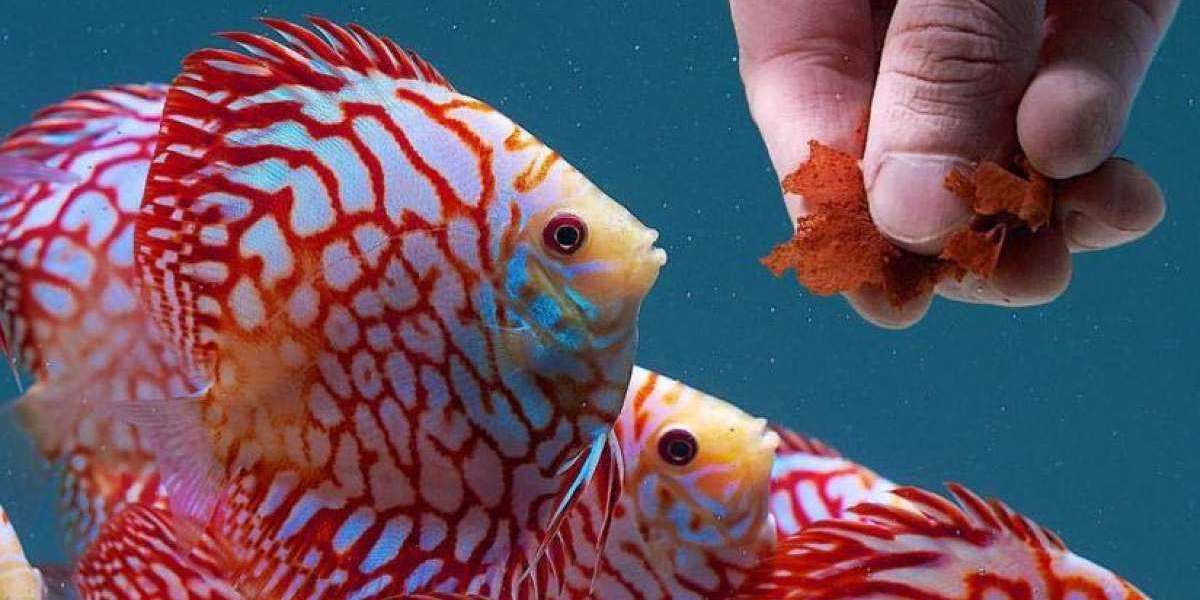Ornamental Fish Feed: Nutritional Requirements and Types Available in the Market
Types of Ornamental Fish Feed
There are different types of ornamental fish feeds available in the market depending on the nutritional needs and feeding habits of various fish species. Some of the common types include:
Flake Foods
Flake foods are one of the most commonly used ornamental fish feeds. They are dry and lightweight flakes that float on the surface of water for a while before dissolving. This makes them ideal for most community fish and top feeders. Flake foods usually contain a balanced mixture of proteins, lipids, vitamins and minerals.
Pellet Foods
Pellets are dense, sinking feeds that are preferred by bottom-dwelling fish and fast sinkers. They have a higher nutritional density than flakes and don't create as much mess. Pellet foods are usually recommended for finicky eaters, growing fishes and breeders.
Granular Foods
Granular foods have a bigger, bead-like shape and slowly dissolve in water. They are suitable for aging fish with weaker jaws as well as bottom feeders. Granular feeds pack essential nutrients in easy to digest, larger sizes.
Live Foods
While not strictly a feed type, live foods like bloodworms, brine shrimp, tubifex worms, daphnia etc. are important in developing coloration and strengthening the immune system of fish, especially fry and juvenile. They must be fed in moderation as part of a balanced diet.
Nutritional Requirements of Ornamental Fish
Understanding the key nutritional requirements helps choose the right ornamental fish feed. Some important nutrients include:
Protein: All fish require a daily source of complete protein for growth, tissue repair and organ function. A quality feed must provide 15-50% protein depending on fish type and life stage.
Lipids: Oils and fats provide energy and enhance the absorption of fat-soluble vitamins. The ideal content is 3-15% of total feed.
Carbohydrates: While not a major source of energy like proteins and lipids, low levels of complex carbohydrates are important for fiber and feed buoyancy.
Vitamins: Vitamins A, C, D, E, B-complex and others are needed in trace amounts. Deficiencies can cause various illnesses.
Minerals: Calcium, phosphorus and trace minerals like iodine are essential for bone and tissue health. The proportion depends on fish requirements.
Fiber: Naturally occurring fibers aid digestion and maintain intestinal health. However, too much can reduce feed nutrient availability.
Feeding Tips for Healthy Ornamental Fish
In addition to providing balanced nutrition, correct feeding practices are also important to maintain fish health:
- Feed only as much as fish can consume within 2-3 minutes, 2-3 times a day to avoid water pollution.
- Remove any uneaten food to keep water quality optimal. Overfeeding is a major cause of poor water conditions.
- Observe fish behavior to check if they are eating actively and properly. Loss of appetite could indicate underlying problems.
- Vary feeds occasionally and offer supplements seasonally matching natural availability of additional nutrients from live foods, algae etc.
- Clean and maintain feeding equipment to prevent mold growth which could sicken fish. Thaw frozen food gradually in tank water before use.
- For fries and young fish, feed small frequent meals using appropriate live or commercial feeds matching their mouth size.
- Adjust feeding amounts and frequency according to water temperature and tank conditions. Increase during growth periods and decrease during breeding phases or in heavily stocked tanks.
Common Ornamental Fish Feed Brands
The ornamental fish feed industry offers several well-established brands providing balanced nutrition tailored to needs of popular aquarium fish species. Here are some leading options in the US and Europe:
- Tetra: Offers a wide assortment of premium flakes, pellets and granules for tropical, goldfish and koi diets.
- Hikari: Known for high-quality live, frozen and non-live foods. Their bio-gold and tropical bio-min products suit many fish types.
- Wardley: Affordable lineup for community fish, including tropical granules, sinking shrimp pellets and spirulina-rich algae wafers.
- Omega One: Specialized flakes fortified with natural color enhancers, vitamins and minerals in vegetable or meat formulas.
- Sera: German brand with micronized feeds for sensitive feeders and young fishes, focusing on natural ingredients.
- New Life Spectrum: Whole food formulations for optimal growth, health and immune function of various fish, shrimp and corals.
Conclusion
Providing a balanced, species-appropriate ornamental fish diet along with correct feeding amounts is essential to keep them vibrant and prevent health and water issues. While commercial feeds cater to most needs, occasional supplementation using live and fresh foods as per natural tendencies enriches the nutritional profile.
Search
Popular Posts
-
 Laser Cleaning Dry Market Size, Industry & Landscape Outlook, Revenue Growth Analysis to 2030
By ajit Chary
Laser Cleaning Dry Market Size, Industry & Landscape Outlook, Revenue Growth Analysis to 2030
By ajit Chary -
 The mobile app Pin Up casino
By Pin Win
The mobile app Pin Up casino
By Pin Win -
 Turkey E-Visa for Australian Citizens
Turkey E-Visa for Australian Citizens
-
 Looking for a new high efficient product for your home or office?
By dlgroupmalta
Looking for a new high efficient product for your home or office?
By dlgroupmalta -
 Shop the Latest Collection of Fans at Malta's Leading Store - Fans Malta
By dlgroupmalta
Shop the Latest Collection of Fans at Malta's Leading Store - Fans Malta
By dlgroupmalta



